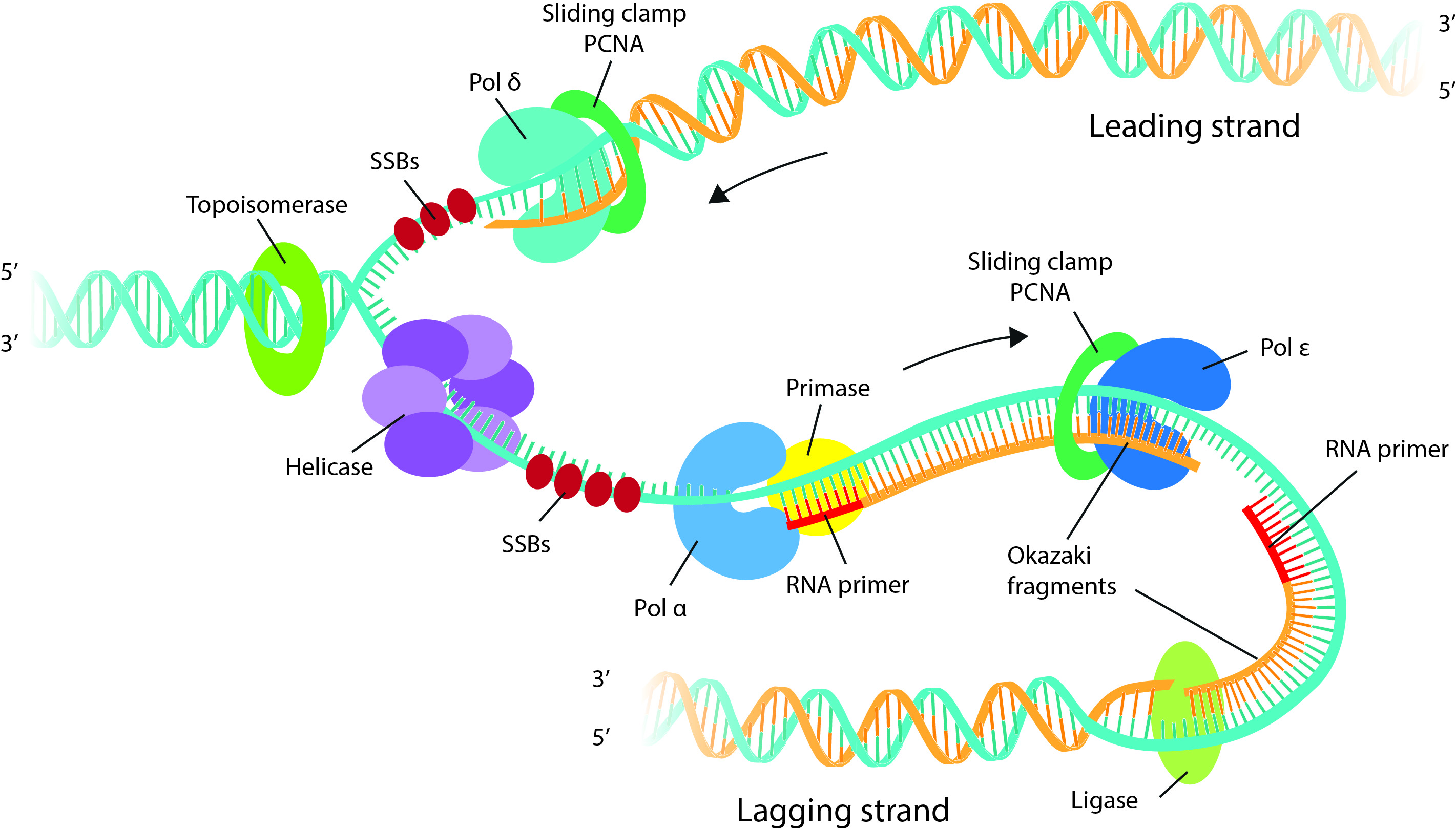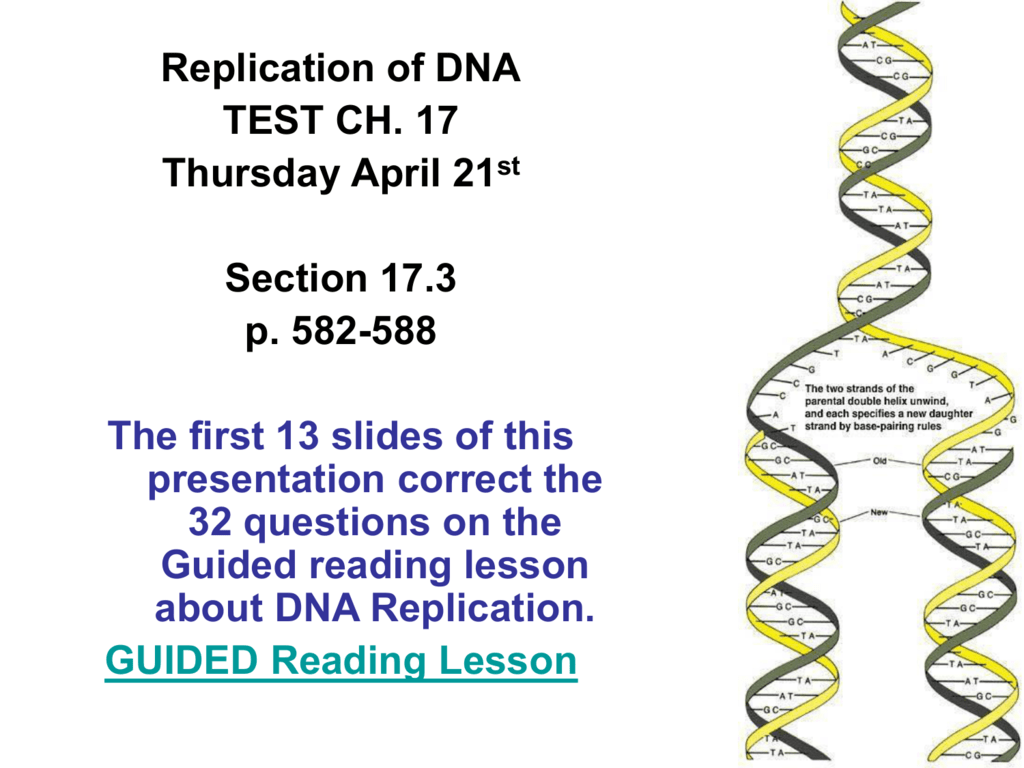

Telomeres are also a biomarker of aging, with telomeres shortening with each cellular division or, in other words, as you advance in age. Telomeres are regions of repetitive nucleotide sequences at each end of a chromatid, which protects the end of the chromosome from deterioration or from fusion with neighboring chromosomes. The enzyme DNA ligase then joins Okazaki fragments together, forming a single unified strand.Ī special type of DNA polymerase enzyme called telomerase catalyzes the synthesis of telomere sequences at the ends of the DNA.

The gaps where the primer(s) had been are then filled by yet more complementary nucleotides.Īnother enzyme “proofreads” the newly formed strands in order to make sure there are no errors. This type of replication is called ‘discontinuous’, as the Okazaki fragments will need to be joined up later.Īfter the formation of both the continuous and discontinuous strands, an enzyme called exonuclease removes all RNA primers from the original strands. The lagging strand begins the replication process by binding with multiple RNA primers, tgenerated by the primase enzyme, at various points along the lagging strand.Ĭhunks of DNA, called Okazaki fragments, are added to the lagging strand between the primers, also in the 5’ to 3’ direction. This sort of replication is called ‘continuous.’

The primer acts as the starting point for DNA synthesis.Įnzymes called DNA polymerases generate new complementary nucleotide bases (the A,C, G, and T) and are responsible for creating the new strand by a process called elongation. In eukaryotic cells, polymerases alpha, delta, and epsilon are the primary polymerases involved in DNA replication. Leading strandĪ short piece of RNA called a primer, which is produced by an enzyme called primase, binds to the end of the leading strand in the 5’ to 3’ direction.

It’s important to note that the two sides are replicated through two different processes in order to accommodate the directional difference. It’s this asymmetry that gives a DNA strand a “direction,” allowing for easy binding between nucleotides of the opposite strands. The 5′ carbon has a phosphate group attached to it and the 3′ carbon a hydroxyl (-OH) group. These numbers indicate end-to-end chemical orientation, with the numbers 5 and 3 representing the fifth and third carbon atom of the sugar ring respectively. The notations 5′ and 3′ mean “five prime” and “three prime,” which indicate the carbon numbers in the DNA’s sugar backbone. The first strand, which replicates nucleotides one by one is the leading strand the other strand, which replicates in chunks, is the lagging strand. The other strand is oriented in the 5’ to 3’ direction (away from the replication fork), this is the lagging strand.īecause the enzyme that carries out the replication, DNA polymerase, only functions in the 5′ to 3′ direction, this means that the daughter strands synthesize through different methods, one adding nucleotides one by one in the direction of the replication fork, the other able to add nucleotides only in chunks. One of the strands is oriented in the 3’ to 5’ direction (towards the replication fork), this is the leading strand. Replication of leading and lagging strands of DNA. For this to work, each DNA strand runs in the opposite direction. The two strands of the double-helix DNA are joined together by cross-bars, twisted around. Next, the Single-Stranded DNA Binding Protein (SSB Protein) binds to the now single-stranded DNA, preventing the separating strands from joining again. The separation creates a ‘Y’ shape called a replication fork and the two single strands of DNA now act as templates for making new strands of DNA. Before DNA replication can begin, the double helix structure of the DNA molecules has to be ‘unzipped.’ Helicase, an enzyme, is integral to this process, breaking the hydrogen bonds that hold the complementary bases of DNA together (A with T and C with G).


 0 kommentar(er)
0 kommentar(er)
